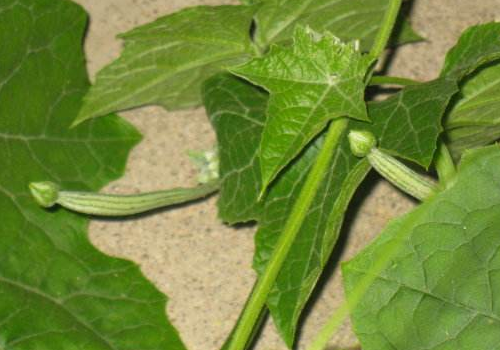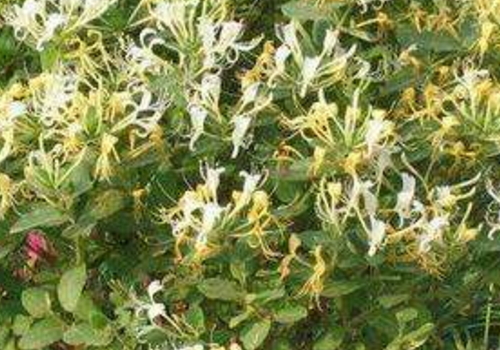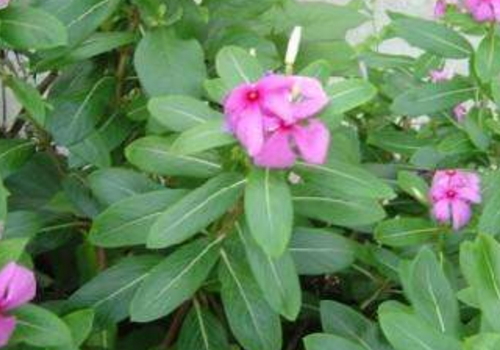Towel gourd leaves yellowing. What to do?
Towel gourd, this is also super delicious, can be likable, very delicious, so how does the towel gourd leaves turn yellow? What to do:
Towel gourd leaves yellowing what's going on:
1. Yellowing of new leaves caused by unreasonable fertilization. The data show that the demand ratio of nitrogen, phosphorus and potassium for towel gourd growth can be generally considered as 1.68, 1.68 and 1.53. Due to the extensive promotion of protected cultivation in recent years, the market is good, the per unit yield of towel gourd is increasing, and the phenomenon of insufficient application of nitrogen and potassium fertilizer is also more common, especially in the flowering and fruiting stage, potassium deficiency occurs more frequently. The main symptoms are as follows: the leaf tip and edge of the leaf are yellow, and then gradually expand to the mesophyll between the veins. In severe cases, the leaf scorched and curled, the fruit development is blocked, and the abnormal melon phenomena such as big head, thin waist and bending occur from time to time.
At the same time, too much nitrogen fertilizer, especially too much ammonium nitrogen, will also directly affect the towel gourd absorption of calcium fertilizer, resulting in calcium deficiency. The main manifestations are as follows: the growth of new leaves is blocked, the leaf margin is incomplete, the leaf surface is wrinkled, and there are yellow or yellowish-brown patches. The yellowing of new leaves reflected by netizens should have something to do with these reasons.
two。 A small yellow spot on an old leaf caused by brown spot. Towel gourd brown spot mainly harms leaves, the spot is round, long or irregular, brown to grayish brown, 0.5-13 mm in diameter, the edge of the spot is obvious or not obvious, and is chlorotic to yellow halo, mildew layer is rare. The disease was originally called Cercospora melonensis, a subphylum fungus. The pathogen overwintered with mycelium or conidia on the diseased remains in the soil, and carried out primary infection and re-infection with conidia next spring, and spread by airflow. Under the conditions of warm and humid, partial application of nitrogen fertilizer and continuous cropping, the disease is easy to occur seriously.

What if the towel gourd leaves turn yellow:
1. Practice crop rotation with non-gourd vegetables for more than 2-3 years, apply fully fermented and mature organic fertilizer, apply fertilizer according to the proportion of nitrogen, phosphorus and potassium required by towel gourd growth, and properly increase calcium nitrate and borax by 1kg per mu to enhance plant disease resistance.
two。 Chemical spray prevention and control:
(1) 750-fold solution of 80% azolipramine-mycin wettable powder + 750-fold solution of 60% caruri calcium + 750-fold solution of 21% caruri boron.
(2) 41.4% benzoin 1: 1 combination (25 ml water agent + 10 g powder) 428 times solution + 10% high boron active potassium calcium water agent 300 times solution.
(3) 1500 times solution of 25% azoxystrobin suspension + 60% azolyl ether ·Dysenlian water dispersible granule + 1500 times solution of 10% extraordinary zinc calcium boron powder.
Towel gourd leaves yellowing reasons and treatment methods are introduced here, this is a long experience!
Why do towel gourd leaves turn yellow? What if the towel gourd leaves turn yellow?
Why do towel gourd leaves turn yellow? How to prevent and cure it?
What is the reason why towel gourd leaves turn yellow?
1. Yellowing of new leaves caused by unreasonable fertilization. The data show that the demand ratio of nitrogen, phosphorus and potassium for towel gourd growth can be generally considered as 1.68, 1.68 and 1.53. Due to the extensive promotion of protected cultivation in recent years, the market is good, the per unit yield of towel gourd is increasing, and the phenomenon of insufficient application of nitrogen and potassium fertilizer is also more common, especially in the flowering and fruiting stage, potassium deficiency occurs more frequently. The main symptoms are as follows: the leaf tip and edge of the leaf are yellow, and then gradually expand to the mesophyll between the veins. In severe cases, the leaf scorched and curled, the fruit development is blocked, and the abnormal melon phenomena such as big head, thin waist and bending occur from time to time.
At the same time, too much nitrogen fertilizer, especially too much ammonium nitrogen, will also directly affect the towel gourd absorption of calcium fertilizer, resulting in calcium deficiency.
two。 A small yellow spot on an old leaf caused by brown spot. Towel gourd brown spot mainly harms leaves, the spot is round, long or irregular, brown to grayish brown, 0.5-13 mm in diameter, the edge of the spot is obvious or not obvious, and is chlorotic to yellow halo, mildew layer is rare. The disease was originally called Cercospora melonensis, a subphylum fungus. The pathogen overwintered with mycelium or conidia on the diseased remains in the soil, and carried out primary infection and re-infection with conidia next spring, and spread by airflow. Under the conditions of warm and humid, partial application of nitrogen fertilizer and continuous cropping, the disease is easy to occur seriously.
What if the towel gourd leaves turn yellow?
1. Practice crop rotation with non-gourd vegetables for more than 2-3 years, apply fully fermented and mature organic fertilizer, apply fertilizer according to the proportion of nitrogen, phosphorus and potassium required by towel gourd growth, and properly increase calcium nitrate and borax 1-2 kg per mu to enhance plant disease resistance.
two。 Chemical spray prevention and control:
(1) 750-fold solution of 80% azolipramine-mycin wettable powder + 750-fold solution of 60% caruri calcium + 750-fold solution of 21% caruri boron.
(2) 41.4% benzoin 1: 1 combination (25 ml water agent + 10 g powder) 428 times solution + 10% high boron active potassium calcium water agent 300 times solution.
(3) 1500 times solution of 25% azoxystrobin suspension + 60% azolyl ether ·Dysenlian water dispersible granule + 1500 times solution of 10% extraordinary zinc calcium boron powder.
What to do with the growth of insects in Daphne fragrance flowers? disease and pest control of Daphne fragrance flowers / 4 insects and 2 diseases
Daphne, a beautiful ornamental flower, not only looks good, but also has strong disease resistance, so it is very suitable for keeping indoors and is deeply loved by flower friends. But in the process of breeding, because of some reasons, Daphne odorifera will still grow insects and get sick, affecting plant growth. So, what should we do if the Ruixiang flowers grow worms? The following is the pest control of Ruixiang flowers, let's go and have a look!
First, how to do when the Ruixiang flower grows worms, spray with medicine
Although Daphne odorifera has strong disease resistance, it will also have insect pests and occasional diseases in the case of poor growth environment and improper maintenance. Among them, attention should be paid to insect pests such as aphids, red spiders, shell insects, earthworms, etc., and diseases include mosaic disease, root rot and so on. So what if the Ruixiang flowers grow worms? It's very simple, you just need to identify the pest, and then solve it by spraying.
II. Pest control of Daphne odorifera
1. Aphids
Although Daphne is not easy to infect insects, it is also vulnerable to aphids if the environment is different in hot summer weather. The insect generally parasites on the leaves and absorbs juice. Symptoms of being violated: the leaves of Daphne odoratum are yellow and withered, and in severe cases, the color of the flower can be reduced and wither quickly.
Prevention and control methods: after finding aphids, if the quantity is very small, you can take artificial control of aphids, brush off the aphids with a brush and bury them in the basin soil; when there are many aphids, you can use 40% Kuailing wettable powder 20003000 times liquid spray, the effect is particularly good.
2. Red spider
To say that Ruixiang flower long worm, red spider also needs to pay attention to, it uses mouthparts to pierce into the leaves of Ruixiang flowers to suck juice, so that the chlorophyll of the plant is destroyed, the leaves show gray-yellow spots or patches, and the leaves become withered and yellow, or even fall off.
Prevention and treatment: usually should pay attention to the observation of flowers, found that the above symptoms, timely check the back of the leaves. When individual leaves are damaged, insect leaves can be removed; when more leaves are damaged, propargite, dicofol, dimethoate, Huachongjing and other drugs should be sprayed as soon as possible to control them.
3. Scale insects
Shell insect, one of the insects that all flowers hate, Ruixiang flower long worm, may also be it. The insect often gathers on branches, leaves and fruits, and the mouthparts of adults and nymphs are inserted into the leaves and branches of taro to absorb juice, resulting in wilting leaves and inducing coal fouling disease.
Control methods: when there are few shell insects, gently brush them with a soft brush or wipe off with cotton balls and towel gourd stems; when there are too many shell insects, you can choose 40% omethoate, 50% malathion, 80% dichlorvos EC 800-1000 times, spray every 7-10 days, 2-3 times in a row, can effectively prevent the damage of shell insects.
4. Earthworms
Because the root system of Daphne odorifera has sweet taste, it is easier to attract earthworms. The insect will wrap around the root of Daphne odorifera, thus affecting the normal absorption of water and nutrients by the root system, resulting in poor growth of the plant.
Prevention and control methods: turn more pots, find earthworms hidden in the basin soil, get rid of them; during daily maintenance, do not put flowerpots on the soil to prevent earthworms from drilling into the bottom of the basin.
5. Mosaic disease
In addition to the long insects, Daphne odora also has occasional diseases, one of which is mosaic disease, which is the most common disease of flowers. Disease symptoms: the damaged leaves of Daphne odorifera showed color spots and deformities, resulting in poor flowering and stagnation of plant growth.
Prevention and control methods, diseased plants should be removed in time to reduce the source of the disease. When the disease is serious, 50% methyl topiramate 1200 times foliar spray can be used for disinfection to prevent transmission.
6. Root rot
In winter, if too much watering or poor drainage of the basin soil, resulting in the basin soil too wet, or the application of unripe organic fertilizer, Daphne flower is often prone to root rot. Symptoms: the roots and stems of Daphne odorifera are black and rotten.
Prevention and treatment: after the above diseases are found, the rotten parts of the flowers are cut off, applied with sulfur powder, and then replanted with fresh culture soil. After that, move the potted plant to a ventilated sunny place, and soon, the Daphne will return to health.
- Prev

How to water honeysuckle? why don't they blossom?
Honeysuckle, many people are growing, but do not blossom. How to water honeysuckle? Why not blossom? How to water honeysuckle: the principle of watering honeysuckle is: see dry and wet, keep the soil moisture at 30%. 1. Spring and summer: the temperature returns in spring, which is the peak growing season of honeysuckle, if there is enough water.
- Next

How to raise Catharanthus roseus and how to turn yellow leaves?
Catharanthus roseus, which is raised by many people in life, will encounter some problems. How do you keep Catharanthus roseus in a pot? What if the leaves turn yellow? How to cultivate Catharanthus roseus in the pot: 1. Soil: when planting Catharanthus roseus, we must not choose the soil with saline-alkali, at the same time, the soil should have good drainage and air permeability.
Related
- Fuxing push coffee new agricultural production and marketing class: lack of small-scale processing plants
- Jujube rice field leisure farm deep ploughing Yilan for five years to create a space for organic food and play
- Nongyu Farm-A trial of organic papaya for brave women with advanced technology
- Four points for attention in the prevention and control of diseases and insect pests of edible fungi
- How to add nutrient solution to Edible Fungi
- Is there any good way to control edible fungus mites?
- Open Inoculation Technology of Edible Fungi
- Is there any clever way to use fertilizer for edible fungus in winter?
- What agents are used to kill the pathogens of edible fungi in the mushroom shed?
- Rapid drying of Edible Fungi

